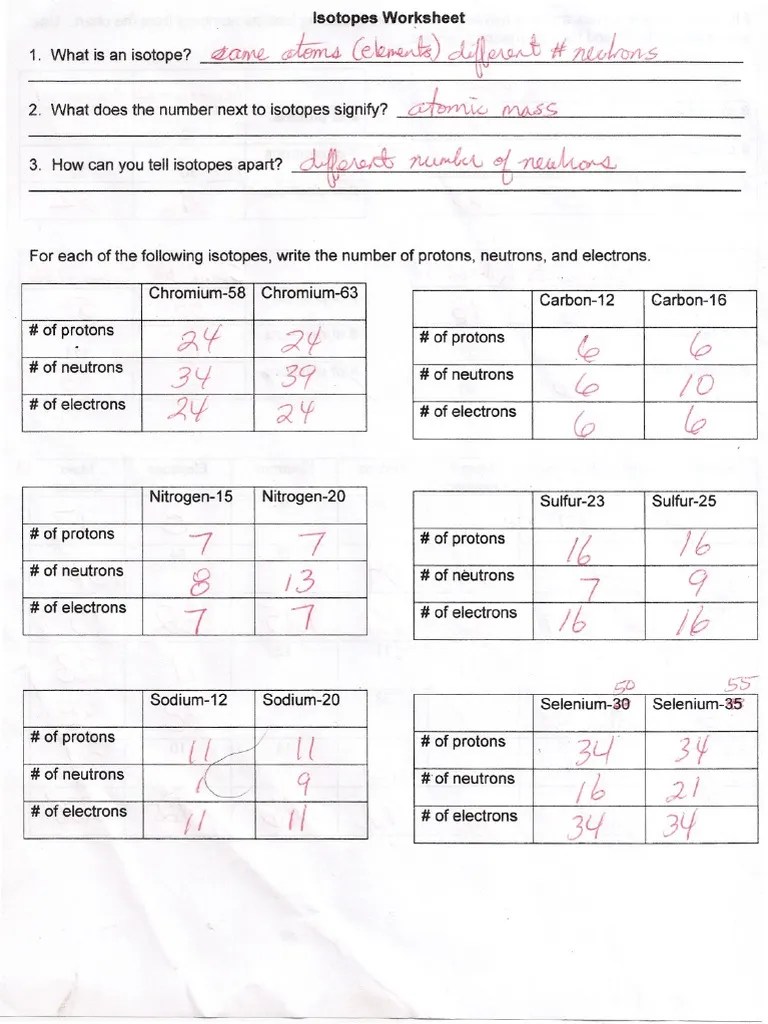How many protons and neutrons are in the first isotope? 32 protons, 38 neutrons, 32 electrons. Consider the following illustrations in which protons are shown as pink spheres and neutrons are shown as green spheres. Web atoms of the same element with different numbers of neutrons are called isotopes. So different isotopes have different mass numbers but the same proton number.
Explain, in terms of subatomic particles, what is meant by the term isotopes. Web atoms of the same element with different numbers of neutrons are called isotopes. 32 protons, 38 neutrons, 32 electrons. 5 protons, 6 neutrons, 5 electrons.
Imagine you have 90 balls with mass 200 g, and 10 balls with mass 300 g. How many protons and neutrons are in the second isotope? Web isotope practice worksheet 1.
Web ask the class to read through the remaining sections on the provided worksheet, and answer the questions. Great practice for students to master atomic and mass numbers. Full lesson for gcse chemistry with worksheets on the lesson isotopes and ions. Understand the relationship between the masses of isotopes and the atomic weight of an element; If we know the number mass number and the atomic number, we can calculate the number of neutrons in the atom using:
One isotope has a mass number of 10 and the other isotope has a mass number of 11. Web in a sample of e there are two isotopes. How many protons and neutrons are in the first isotope?
A Short Worksheet To Introduce Or Revise Isotopes.
Imagine you have 90 balls with mass 200 g, and 10 balls with mass 300 g. Web understand the structure of atoms, isotopes, and ions; Web ask the class to read through the remaining sections on the provided worksheet, and answer the questions. Web isotope practice worksheet 1.
Web Isotopes Work Sheet.
Fill in the following table. Identify which among the isotope symbols below is incorrect. These isotopes are neutral (charge = 0). Full lesson for gcse chemistry with worksheets on the lesson isotopes and ions.
19 Protons, 22 Neutrons, 19 Electrons.
The numbers 12, 13, and 14 refer to the mass number. The relative atomic mass (ar) of atoms is the average mass of all the different isotopes of an element (taking into account the amount of each isotope) on a scale where 12c atoms have a mass of exactly 12. The average atomic mass of a lead atom is 207.2 amu. Exshare answers from the class, ensuring that all students are able to press 18o/16o in terms of voltage and resistance before allowing them to move on to calculate 18o/16o ratio from the data provided.
_____ _____ For Each Of The Following Isotopes, Write The # Of Protons, Neutrons, And Electrons.
Describe the general arrangement of subatomic particles in the atom electrons surround the nucleus; The number 6 refers to the _____ c. (i) 4019 p (ii) 12050 sn (iii) 2963 cu (iv) 10947 au (v) 5826 fe. If we know the number mass number and the atomic number, we can calculate the number of neutrons in the atom using:
\textcolor {f21cc2} {\text {number of neutrons}=\text {mass number. Full lesson for gcse chemistry with worksheets on the lesson isotopes and ions. Great practice for students to master atomic and mass numbers. Web isotopes work sheet. What does the number next to isotopes signify?



